The Arctic Cooling Liquid Freezer II 240 & 420 AIO Coolers Review: Big and Effective
by E. Fylladitakis on January 15, 2021 8:15 AM EST- Posted in
- Cases/Cooling/PSUs
- Corsair
- Water Cooling
- Liquid Cooling
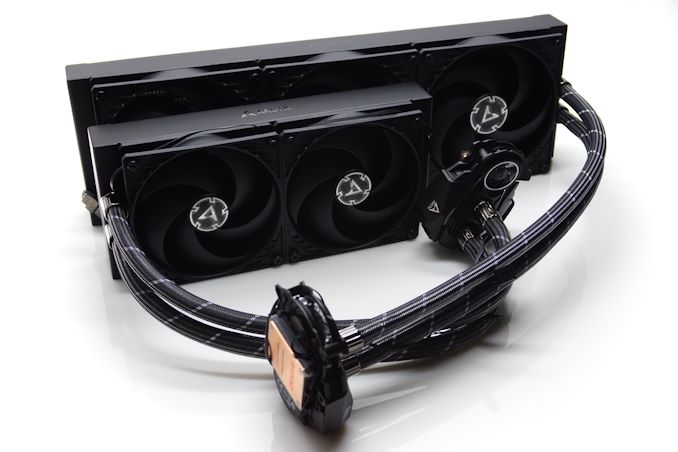
Arctic Cooling is a company originating from Switzerland and has risen to prominence for their advanced cooling solutions. The company was founded back in 2001 and offered some of the best thermal compounds available at the time. Today, cooling products remain the core focus of the company, but they also offer a few other products as well, such as advanced monitor mounts and audio peripherals.
Over the past several months, Arctic Cooling has been picking up from a dry spell in top-tier CPU coolers, having gone a few years since their previous release. Last year, the company introduced the first parts in their their Liquid Freezer II all-in-one liquid cooling series, expanding the range as the months went by. A few weeks ago the company announced the release of the massive Liquid Freezer II 420, triple-fan AIO cooler that holds not three 120mm fans – as is usually the case with triple-fan coolers – but three even larger 140 mm fans. Arctic Cooling set out to cover the market from bottom to top with their Liquid Freezer II coolers, and the introduction of a 420mm design has certainly cemented that status.
In this review, we are taking a look at a couple of Arctic Cooling’s Liquid Freezer II coolers. We're of course diving into the behemoth 420 AIO cooler, but also the much more sensible 240mm version of the cooler. How well does such a large cooler perform with regards to thermals and noise? And just how much better does that make the super-sized cooler over the more normal, widely compatible version of the same cooler? Let's find out.
Packaging & Bundle
Arctic Cooling supplies the Liquid Freezer II series in relatively simple but sturdy recyclable cardboard boxes. The artwork on the box is based on a schematic of the cooler itself, with plenty of information regarding the cooler on the backside of the box. Inside the box, we found the coolers and their parts well protected by cardboard inserts and nylon bags.
The bundle supplied with the Liquid Freezer II coolers is the same regardless of the cooler’s size. Unfortunately, the MX-4 thermal compound that the company advertises to be included is a single dose, not a whole tube. The rest of the bundle consists of the necessary mounting hardware, all in black color. There is no paper manual but there is a card with a QR code, which in turn leads to an downloadable manual.
The Arctic Cooling Freezer II 240 / 420 Coolers
As expected, the main difference between the 240 and 420 versions of the Freezer II is the size of their radiators and fans. Other than that, the two all-in-one (AIO) liquid coolers are identical, using the same main block and tubing. The core design of the coolers is the typical AIO configuration of a single radiator, two hoses, and a block that combines the CPU contact plate and a miniature liquid pump. One major divergence compared to competitive products is that the fans are already installed onto the radiators and everything is pre-wired, with the whole assembly powered by a single 4-pin connector coming out of the block. And while pre-assembly isn't strictly necessary for an AIO cooler, anyone who has assembled a cooler can probably appreciate the time saved by not having to line up screws, power cable orientations, etc. Furthermore, recognizing that some users may want to reconfigure and reassemble the cooler anyhow, the company’s designers added regular fan connectors onto the radiator, meaning that one can seamlessly replace the fans if needed.
Arctic Cooling is using high-density rubber for minimal long-term evaporation that should last for the lifetime of the cooler, with no filling/service ports to be found. The hoses are protected by a nylon sleeve with a circular dual silver thread design. The nylon sleeve also hides the cable that powers the fans. Chromed metal press fittings are used to secure the tubing on both ends.
The radiators of the Arctic Cooling Freezer II AIO coolers are dual-pass cross-flow designs with tiny fins soldered on thin oblong tubes, yet they are not based on the same exact design that most AIO coolers use. Regardless of variant, all of Arctic Cooling’s Freezer II radiators are rectangular constructs that are significantly thicker than standard designs, measuring 38 mm thick without the fans and nearly 65 mm with the stock fans attached. The 420 version of the Freezer II also sports the largest radiator we have seen used by an AIO cooler to this date and comes with three 140 mm fans installed. It is not the longest, as there were a few 4×120mm (480) radiators circulating the market over the past few years but, even compared to these, it has significantly more heat exchange area. Consequently, case compatibility may be a challenge for this behemoth.
The main block assembly of the Freezer II is short and relatively simple, with one major difference discerning it from most competitive products – there is a small 40 mm fan attached to it. This fan has practically nothing to do with the cooling of the CPU itself but is meant to provide some airflow to the motherboard’s power circuitry that would normally be cooled by the air cooler’s airflow. Other than that, the assembly includes the copper contact plate and the mini pump.
The square copper contact plate is not machined down to a complete mirror finish but is very smooth. It is large enough for most commercial processors but will not cover a ThreadRipper processor, for which the Freezer II coolers have no stock support for out of the box.


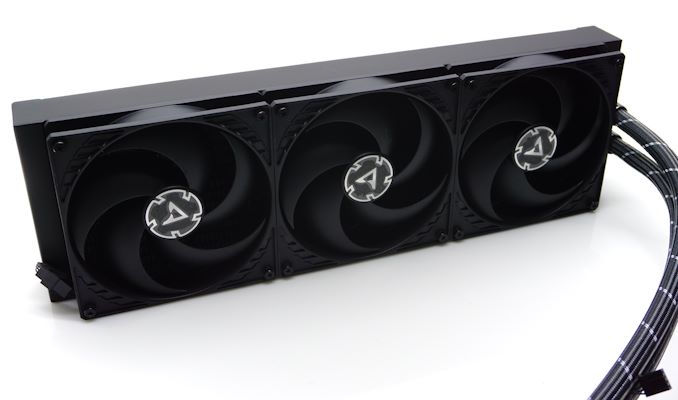
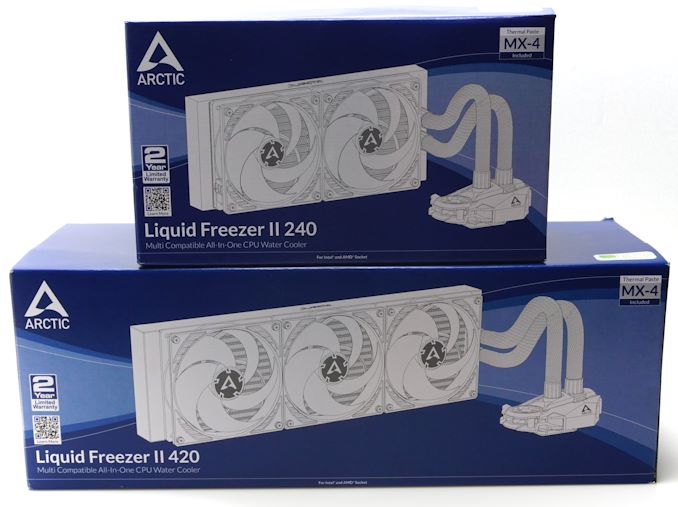
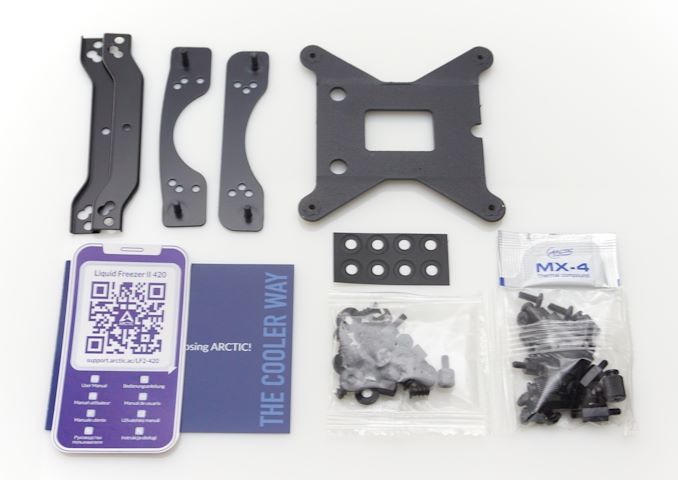
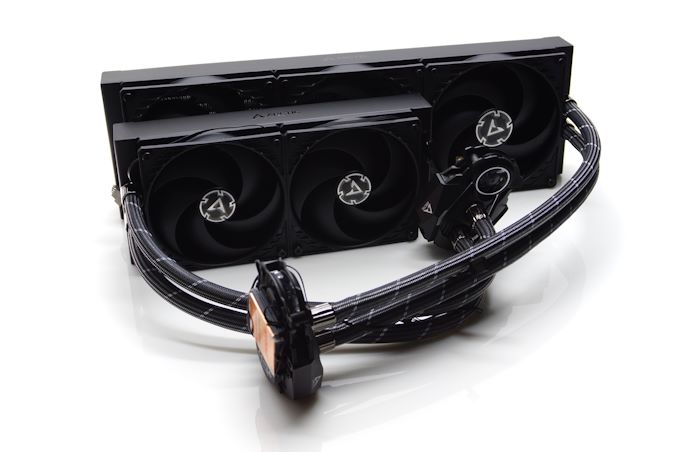
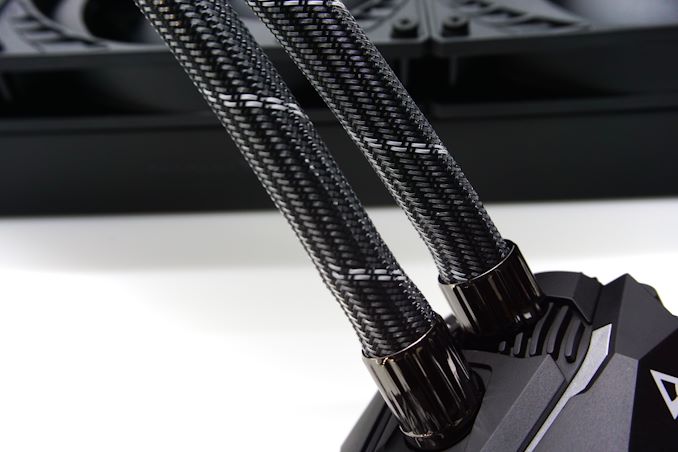
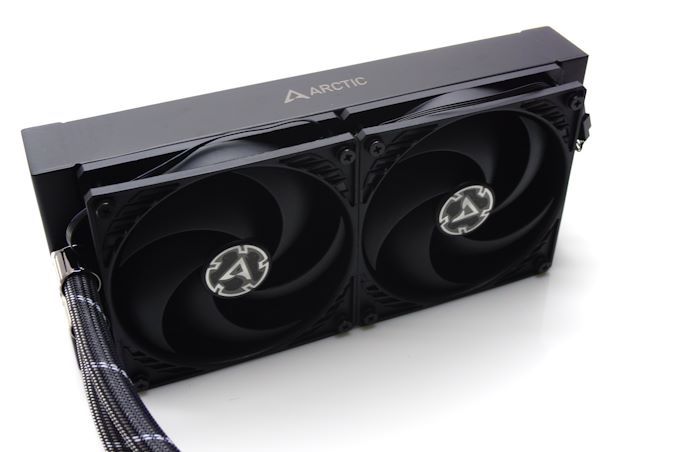

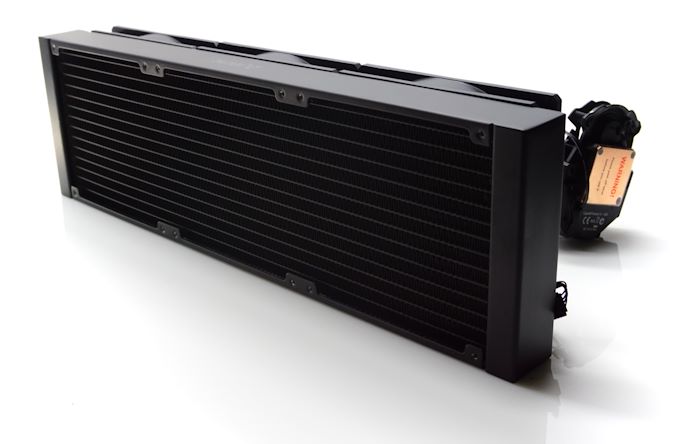
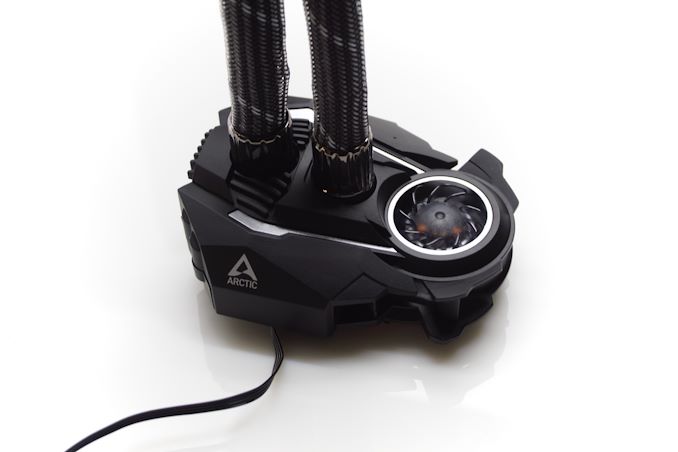









44 Comments
View All Comments
jabber - Saturday, January 16, 2021 - link
Hmm interesting. I just this week replaced my Arctic Cooling 240 MK1 AIO with a Noctua NH-D15S. The result was pretty much the same cooling but about 60% less noise. A success in my book. Nice easy installation too. The only change was I used my Grizzly paste rather then the tube of Noctua supplied.Makaveli - Saturday, January 16, 2021 - link
I've not had any noise issues at all on a Corsair H150i 60% less noise with a D15S? sounds like that AC 240MK1 AIO is junk.jabber - Sunday, January 17, 2021 - link
4x120mm fans on the AC AIO down to 1x140mm fan on the Noctua. Not hard to imagine really.The 60% is not a measured figure, shall we say "a lot quieter!"
Makaveli - Sunday, January 17, 2021 - link
Except the AC240MK1 is a 240MM AIO which means 2x120mm Fans. He never said he has the 420mm model which is what you are using for an example in your post. Nice try though.jabber - Sunday, January 17, 2021 - link
In that case I have the version with 4 120 fans. The Artic Liqid Freezer 240 with 4 fans.https://www.kitguru.net/components/cooling/dominic...
So yeah, nice try.
Makaveli - Monday, January 18, 2021 - link
I wouldn't expect a 4 fan 120mm AIO to be quiet. A 3 fan 140mm AIO would make less noise than that.brontes - Saturday, January 16, 2021 - link
I'm not sure about non-PC radiators but in the PC space, crossflow (or "xflow") refer to rads that have the inlet and outlet on opposite ends. This is single pass. While less performant than dual pass, it's not as bad as you'd expect as it's much less restrictive and will yield a higher flow rate at a given pump speed(/noise level.) The primary use case is for cleaner/less tubing, depending on the case layout.The alternative is your standard dual pass where the water runs to one end, turns around, and runs across the rad again. Inlet and outlet are on the same end.
At least in the PC realm of parlance, there is no such thing as a "dual-pass cross-flow design."
micoequipment - Monday, January 18, 2021 - link
Great Awesome blog. It's so informative and I love this type of blog and articles.Tom Sunday - Tuesday, January 19, 2021 - link
Yes there is lot to glean from blogs and the feelings of the many. But also a lot o read between the lines and simply cutting through the minutiae. I am just amazed that the AIO manufactures have not come up with any 'new products' and just adding lighting, better hoses, pump head configurations, etc. Todays AIO's are far from where they should be.Oxford Guy - Tuesday, January 19, 2021 - link
Be specific. What do you think they’re lacking?My view is that they’re being applied to the wrong thing. GPUs need them far more than an efficient CPU like recent Zen.